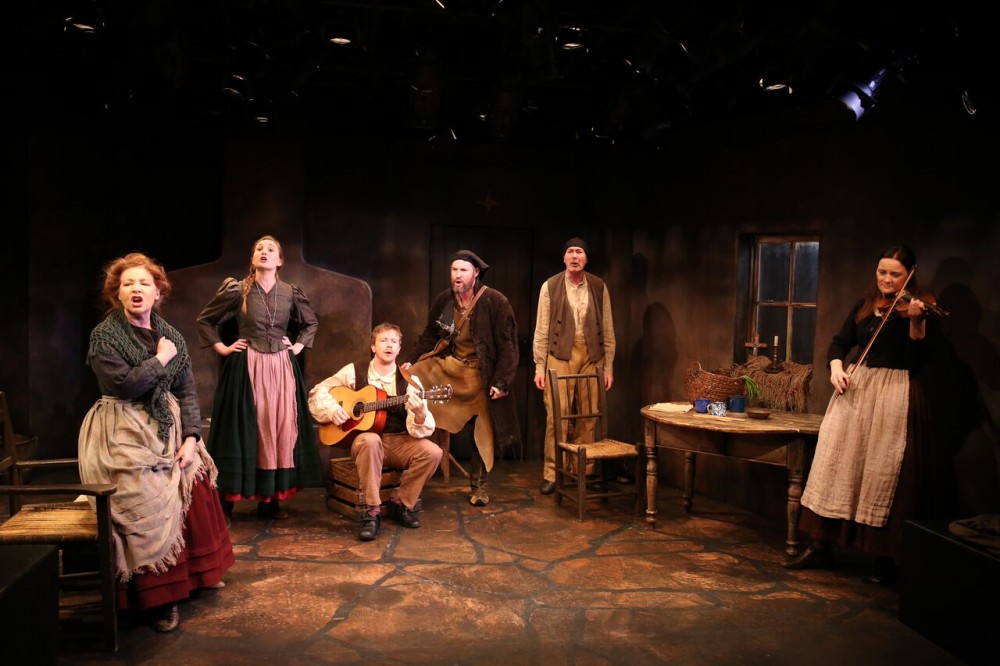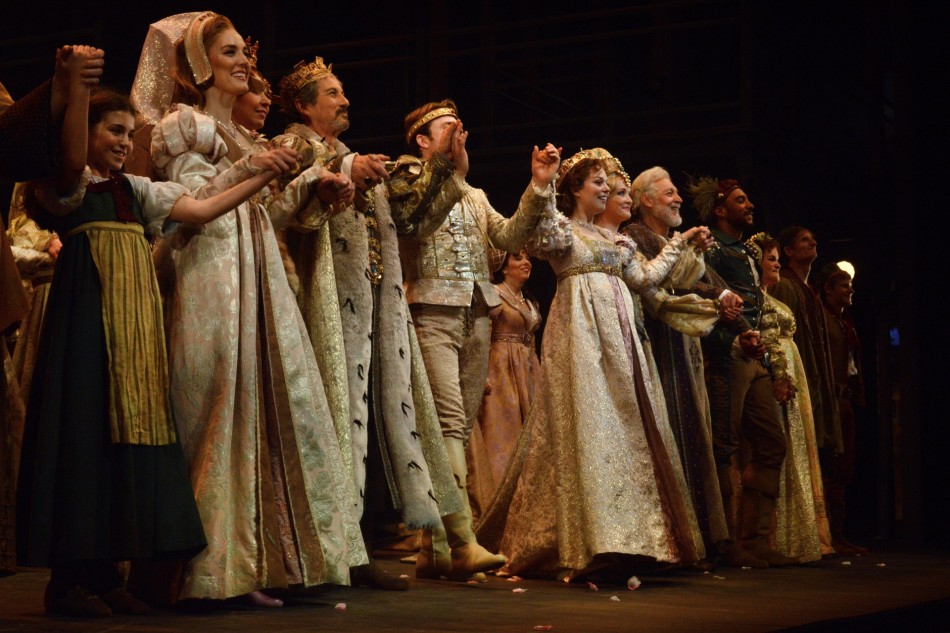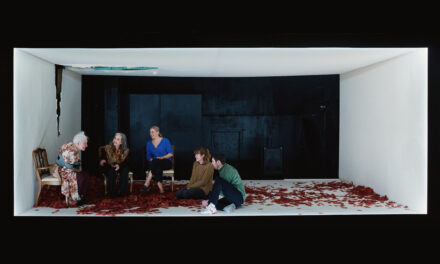By Marilyn Lester
The only thing “small” about the Irish Repertory Theatre’s stunning production of Three Small Irish Masterpieces is the intimate stage upon which these one-act gems are lovingly played. The Pot of Broth by William Butler Yeats and Lady Gregory, The Rising of the Moon by Lady Gregory, and Riders to the Sea by John Millington Synge are a trifecta of brilliance portraying a slice of Irish life gone by, written by the stars of the Celtic Twilight. Hats off to the Irish Rep for reviving and showcasing these jewels. More than 100 years on, even without social or historical context, each stands on its own as a work of outstanding merit and just darn good entertainment.
Yeats, Gregory and Synge were friends, colleagues, collaborators and the driving force in the birth of the Abbey Theatre of Dublin. All were Anglo-Irish members of the upper crust, each, in the parlance of the day, stations above the poor they wrote about. Yet each of these literary giants genuinely connected with the “common folk” and their own deeply Irish identity, particularly in its ancient pagan-Celtic roots.
Yeats was particularly taken with the mythic, occult aspects of Irish culture, writing an essay entitled “Magic” in 1901. The Pot of Broth (1903) is a farce in which a sly tramp flim-flams a rural wife into believing a simple stone can magically produce a wonderful broth. David O’Hara, as the tramp, employs a perfect, lyrical Cork accent to convey the con with a huge, knowing twinkle in his eye. Yeats’ poetic dialog contains more than meets the comic eye. Like the legendary Philosopher’s Stone, which could transform lead into gold, or the Blarney Stone, which conveyed the gift of eloquence, Yeats’ stone is symbolically transformative. The gullibility of the wife, Sibby, is offset by the amusement of her husband, John, who declares the tramp “a gifted man.” Thus, in Yeats’s stone resides the potential to change the naiveté embodied in Sibby, to the wisdom emergent in her husband, John.
National identity is the crux of Isabella Augusta, Lady Gregory’s The Rising of the Moon (1907). Gregory generally wrote lighter fare, but in this piece speaks to the Irish resistance to British rule and the ever-fulminating rebellion against it. (The ballad, “The Rising of the Moon,” recounting a battle between the United Irishmen and the British Army during the Rebellion of 1798 was sung and played by the talented ensemble cast at the top of the show.) In this one-act, a police sergeant in the service of the British government, stationed wharf-side, keeps watch for an escaped political prisoner. In disguise, the escapee appears. At plays end, the sergeant, aware of the man’s identity, lets him go, giving up the hundred pound reward his capture would have brought. Left alone, the sergeant muses if he’d been a great fool. He might be the poorer in sterling, but he now has the pride of remaining true to himself in affirming his Irish identity.
J.M. Synge came to spend a part of each year in his short life on the western, isolated Aran Islands, where life was harsh and connected to the sea. Riders to the Sea (1904) is the tale of Maurya, an old woman who’s lost seven of her menfolk to the sea, and who, during the course of the play, loses the remaining male family member, her young son Bartley. Synge had already turned his back on organized religion and in the work astutely portrays how deeply the ancient beliefs and superstitions of Celtic paganism were woven into the intense religiosity of devout Roman Catholic Ireland. Terry Donnelly as Maurya was outstanding in her searing portrayal of how much the human spirit can possibly bear.
The entire ensemble cast – Colin Lane, Terry Donnelly, Clare O’Malley, David O’Hara, Adam Petherbridge and Jennifer McVey – delivered the goods throughout with superb acting (and musical skills to boot). James Morgan’s compact and versatile set brilliantly captured the essence of a rural Irish cottage of the era. Finely detailed touches, such as the handmade St. Brigid’s cross over the doorway, underscored thematic elements of the plays. Morgan’s set (plus the choice to produce the plays in the small theater) creates a sense of intimacy and connection to the characters and to the action without being claustrophobic.
Lighting design by Michael Gottlieb created mood and helped transform the cottage into a moonlit wharf for the Lady Gregory piece. Realism was also achieved in Linda Fisher’s costume design, down to the rough, woven fabrics of the day. Direction by Irish Rep artistic director Charlotte Moore was tight, keeping the set of plays well paced and the transitions between them seamless.
Three Small Irish Masterpieces plays through April 22 at the W. Scott McLucas Studio Stage of the Irish Repertory Theatre, 132 West 22nd Street, 212-727-2737, www.irishrep.org

























